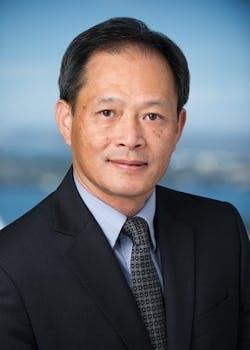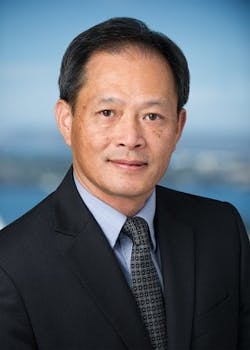Patrick Lee, president of PXiSE Energy Solutions, explores the potential value of sharing microgrid resources with the main grid and the use of intelligent microgrid optimization technology.
Patrick Lee, president, PXiSE Energy Solutions
Many customers install microgrids for financial benefits and as a safety net to ensure a reliable, resilient power supply in the event of a utility failure. The traditional grid in the U.S., in service for the past 140 years, provides electricity 99.9 percent of the time. This leaves about eight hours per year when equipment issues in the power grid or extreme weather conditions lead to major power outages.
For example, the University of California, San Diego, operates a microgrid which supplies most of the energy need on campus that includes a 30-megawatt cogeneration plant a 2.8 MW renewable energy fuel cell and 2.4 MW of solar arrays. Other commercial facilities with microgrids might generate some of the power they use but rely on grid electricity for most of their needs.
As mentioned above, most microgrids are connected to a healthy utility grid 99.9% of the time. They rarely operate independently in island mode, presenting an opportunity. There is potential value in intelligently sharing the microgrid’s resources with the utility or other power consumers in the network, outside of the facility in which it is installed.
The utilities are responsible for keeping the grid system running, and they are willing to pay to ensure stability. Amongst other criteria, they must balance supply with demand, keep the voltage and reactive power within specified parameters, and maintain power quality within set limits. Connected microgrids could add value by providing these services.
Today, most microgrid solutions are planned and built with a focus on the customer’s internal power requirements and benefits. Alongside this important function, the system could be designed to maximize asset value by utilizing the energy resources intelligently according to the changing energy needs internally and externally. This ability to continuously optimize internal energy savings and external energy revenue opportunities can provide facility owners with maximum benefits. PXiSE Energy Solutions’ software-based Active Control Technology (ACT) is designed for such purpose.
Reducing costs and increasing revenue
From the return on investment standpoint, there are two variables for a microgrid owner to consider – is there more value in using the energy sources to reduce internal costs, or to increase the external revenue?
For microgrids where the ACT platform is installed, at a high-rise commercial building in San Diego, and at a winery in northern California, the microgrid controller autonomously calculates and implements the most cost-effective running regime daily according to real-time conditions, without interrupting operations.
Solar and other intermittent electricity resources drive a significant variation in energy flow and voltage. As more of these technologies are deployed, they create a greater need for local voltage control, a service that capable microgrids could provide. This is in addition to the typical service such as demand side response – turning usage up or down to assist with balancing supply and demand on the grid.
Today, most microgrid solutions are planned and built with a focus on the customer’s internal power requirements and benefits. Alongside this important function, the system could be designed to maximize asset value by utilizing the energy resources intelligently according to the changing energy needs internally and externally.
On a normal day under steady state, a microgrid may have little power to contribute to the grid. But if the grid experiences a spike in energy demand, and the utility is willing to pay for support, platforms like these can reduce the microgrid’s internal use and increases the amount of electricity that can be exported to the grid, to ramp up revenue. This is done autonomously without human intervention.
Future market mechanisms
Balancing reactive power, an electrical property relating to power quality, is an additional way for microgrids to support the grid. This can be achieved without impacting the facility’s real power supply.
Traditionally, utilities install their own reactive power support equipment to stabilize the grid and provide good service quality to users, but these types of electric components are inflexible and can be costly. Inverter-based technologies, like solar and battery systems, can provide reactive power support, without the need for any additional equipment. Microgrids that have solar panels, batteries or other power resources could provide reactive power support to their local grid, for an additional revenue stream.
While market mechanisms for some of these grid support services do not yet exist, they are becoming increasingly important and may be developed in the future. Microgrid systems that are flexible, adaptable and optimizable both in real and reactive power variables will be well positioned to take advantage of potential future opportunities to provide grid support services.
In addition to the infrequent island operation of a microgrid during utility outage, there is greater value to be gained from sharing microgrid resources across the power network. From a utility perspective, the operations and coordination of a network of microgrids and other distributed resources (DER) provide a platform to facilitate transactive energy to support the dynamic energy needs of the grid. This arrangement of market-based resources is a key building block of a distributed energy resource management system (DERMS) from the bottom up. When combined with utility-controlled DER as one complete DERMS, the utility will have a unified and practical approach to manage all DER within its network.
Patrick Lee is president of PXiSE Energy Solutions.








